|
In holy wars of distant past, chupas inhabited the discrete biomes of Sirca in colonies of equally-discrete breeds. The modern territories of Sirca, while still as geographically diverse as ever, now sport a more homogenized population. Wildly outstanding genetic traits such as horns, wings and cotton-tails are regulated to chupa folklore and history, yet the old tribal bloodlines continue to hold prominence in Omega's society.
When a chupa is born, they receive a first name and a family name. The former is given by the mother, and the latter is inherited from the father. For very young chupas it's difficult to determine one's full breed, so it is customary to only list the parents' breed on birth certificates. A chupa's twelth birthday is their "naming day," and for this occasion they're brought to the Department of Chupapology to declare their breed with the House of Omega. Official breeds utilize binomial nomenclature, a two-name system that contains a primary and secondary breed (e.g. canis-lupus).
There are a few ways to decide one's full, official breed:
- Traditionally, the primary breed is inherited from one of the parents, and the secondary breed is determined according to the individual's traits and talents, via a physical exam and word-of-mouth from the family.
- In modern times a blood test can be used to find the primary breed, as it has been genealogically determined that each emerged from two distinct bloodlines: shi'a (felis) and fi'la (canis).
- If the results are inconclusive, or sufficient testing unavailable, a last recourse is to assign a generic breed of either felis-catus or canis-catus.
WHAT'S YOUR BREED?
TAKE THE OFFICIAL CHUPAPOLOGY BREED TEST

(As indexed by the Department of Chupapology)
|

The canis breed is the most common encountered on Sirca, and is officially connected to the fi'la bloodline.
Appearance:
Canis come in every range of colors and sizes, and their fur can rapidly change density and length to adjust to the environment (e.g. In hot and arid places, the hair grows short to allow for easier heat dissipation, while in frigid areas the fur grows thick to help insulate from the cold.) Canis are noted for their pronounced canine fangs, a strong sense of smell, and thick claws best suited for digging.
Behavior:
Canis are highly sociable and like to band together in groups.
These "packs" are naturally drawn to chupas with strong leadership qualities, and quickly form a pecking-order around the "top dog." Larger packs may suffer from a collective mob-like mentality called a "pack mind" that may spiral out of control into violence if provoked. Canis are very loyal to both relatives and close friends, and often form large extended families.
Location:
Being the world's most ubiquitous breed,
canis can be found in every territory on the ring. They have no preferred climate, and are quick to adapt to their environments.
Related Breeds: Bison, Cervidae, Equus, Lupus, Ursus, Adustus, Lutris
|
|

Felis is the second-most common breed of chupa, and is officially tied to the shi'a bloodline.
Appearance:
Felis are known for their thick, soft fur. As with canis, felis fur can change in length to adapt to a chupa's climate. They're also identified by needle-like canine teeth, excellent night-vision, and claws that end in hook-like points which are good for climbing.
Behavior: Felis chupas average a higher intelligence quotient than other breeds, which fosters both positive and negative stereotypes about this breed's cunning and craftiness. This breed is less inclined to form social groups than their canis cousins. Most sub-breeds of felis thrive in solitude, and only loosely cooperate with other chupas to survive or mate. They can be very picky about their appearance (many recurring jokes about felis are over their vanity.) They are capable of purring when happy, and will make a hissing sound when scared or angry. Their skittish nature makes them easy to scare or startle.
Location:
Felis can be found all over Sirca, and share the ability of canis to adapt to any environment.
Related Breeds: Leo, Leporidae, Sciuridae, Pardus, Vulpes, Ailurus
Interesting Facts:
|
|

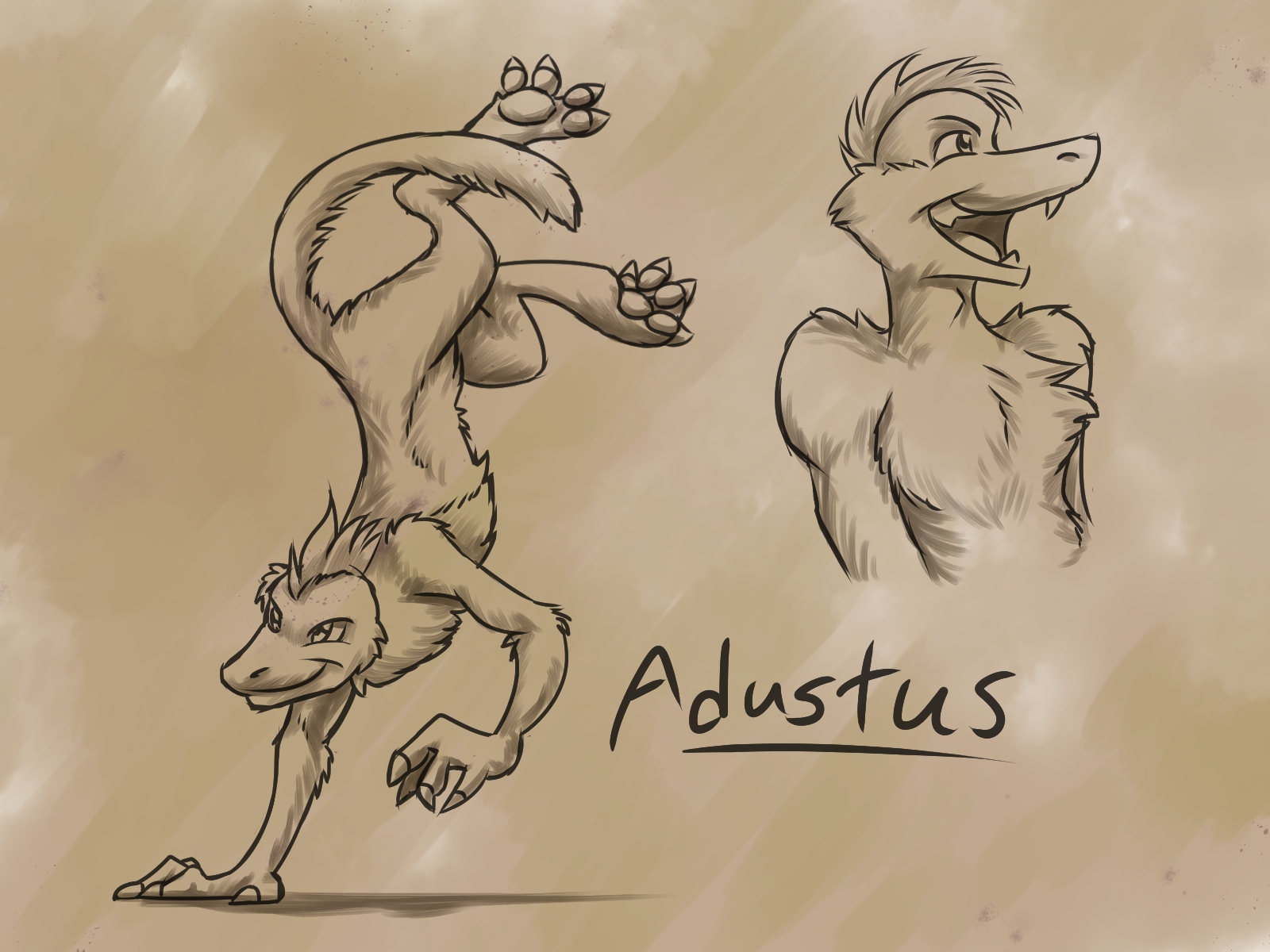
Appearance:
The thick, banded hairs of adustus make a coarse, ticked coat of fur that keeps out dust blown by prairie winds. Their long snouts and stubby claws are typical of canis, even if their size is below the average for those breeds. Their sinewy arms and feet don't carry a lot of strength, yet provide quick bursts of speed and power.
Behavior:
Adustus share the vulpes stereotype for being shifty pranksters, only without the beguiling looks to soften their reputation. At a glance they're called thieves and vagrants, and some embrace this perception, becoming crooks and criminals.
Their rogue-ish charm and cleverness is considered an asset to any group, yet despite this, adustus doesn't tend to form packs like other canis, and prefers to work alone. It's their hardiness and resourcefulness that makes them such a tenacious breed, able to survive on their own where few could. Their ability to "think outside the box" also makes them good engineers or lawyers.
They like to eat boney meals, and love chewing on the bones a while after the meat is gone.
Location:
Adustus feel at home walking the dusty plains of Stigma, or in the arid caves and cliffs around Qoppa.
Interesting Facts:
- From shooting craps on the sidewalks of Omegrad to running Honkal casinos, this breed produces a lot of gamblers.
- Adustus manes naturally make the most stylish mohawks.
- Qoppa's most notorious criminal networks have had adustus leadership, including the Alphanses Syndicate and The Cave Howlers.
|
|

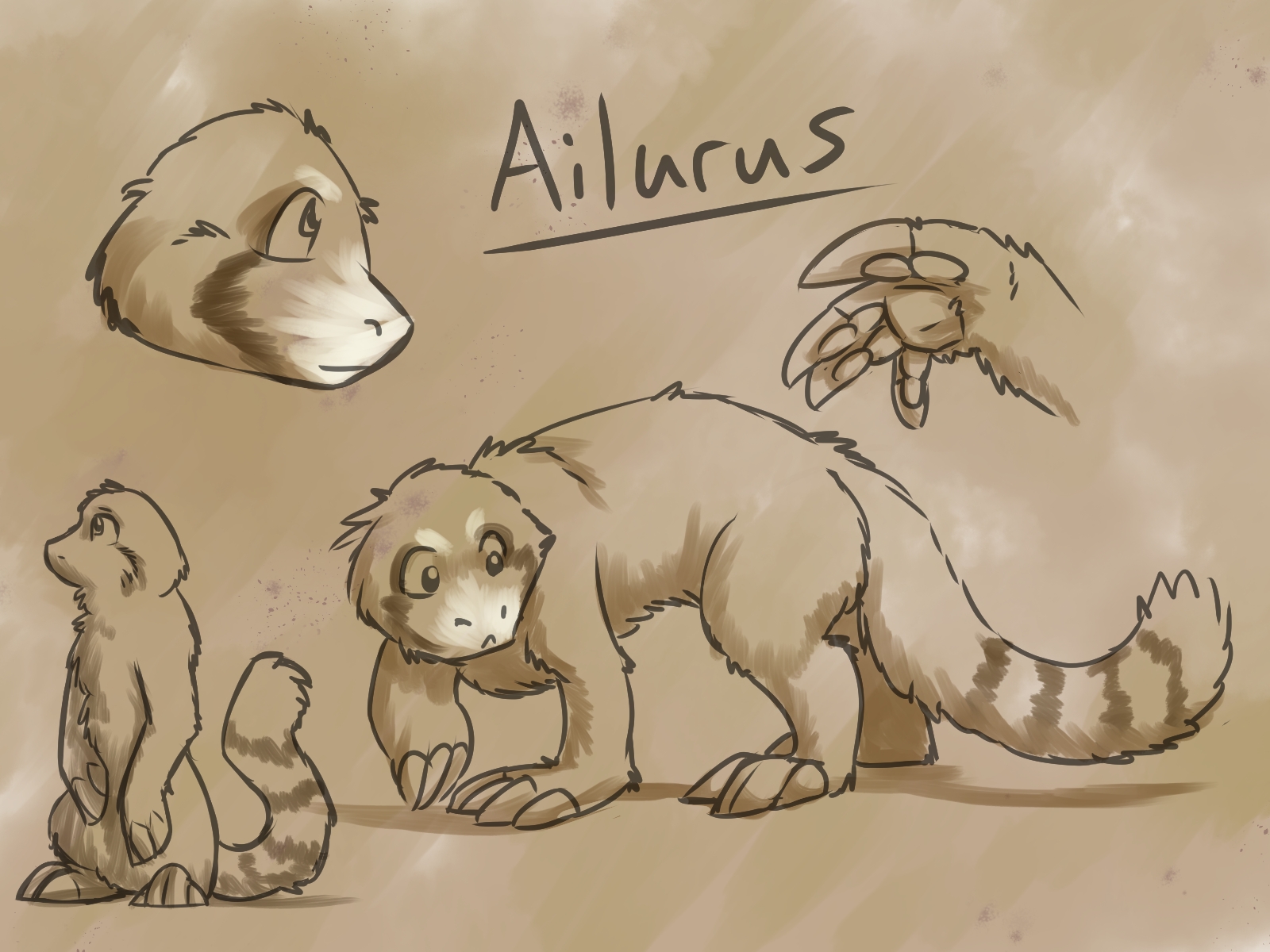
Appearance:
Ailurus have a small-yet-robust build, with short limbs, large clawed hands and feet, and a long tail. They're characterized by their waddling gait, the dark-colored bands on their bushy tails, and the unique tear markings on their light-colored face. Their fur is long, soft and tends toward red hues (although purple and green variants are common.) Unlike other breeds, ailurus keep their distinct stripes and markings into adulthood. Despite the thick fur coat, this breed is heat-sensitive and can't stand extreme temperatures. Layered clothing and knitted scarves are worn often.
Behavior:
This breed has a friendly-yet-solitary disposition. The best place to find an ailurus is around a woodland cabin, where they seek out insects, tubers, beans and berries for their diet. Gardening is one of their favorite crafts, and it's not surprising to find an ailurus with green fur to match their green thumb. They're also excellent climbers, which helps them forage juicer fruits and nuts from trees. They pour all these resources into their cooking, becoming some of the finest chefs around the ring.
Although they thrive on their lonesome, they're known to be extremely gracious hosts that welcome visitors of all kinds and like to care for the needy. Few will take in a guest without offering them a generous helping of homemade bugbean stew.
Location:
Ailurus are native to the islands of the Sea of Vossler, and are most at home in temperate regions across the ring, especially at higher elevations.
Interesting Facts:
- Chupapologists have debated whether this breed is classified as canis or felis for many years.
- Ailurus have an eye for shiny objects, and love to collect all sorts of things, from stamps to pennies to butterfly wings.
- An even number of ring-bands on an ailurus's tail is considered good luck (and vise-versa for an odd number.)
|
|

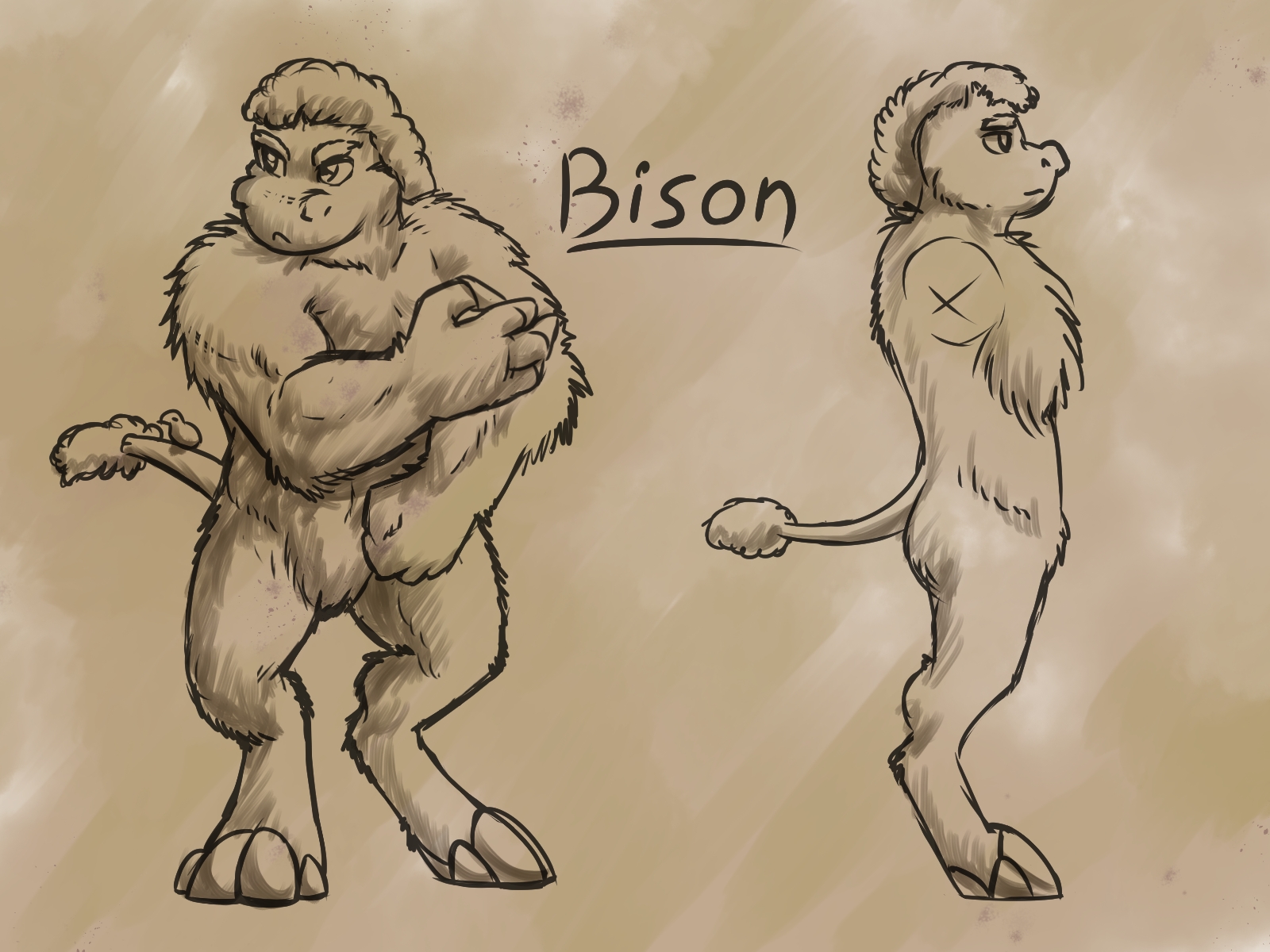
Appearance:
Bison are a large, stout, highly-muscular breed of chupa. Their lower bodies have short hair, while the fur on their arms and upper chest is very shaggy. The hair of their manes is coarse and woolen, forming "afros" of tight curls. Their tails are short, and their claws are thick and stumpy, resembling hooves. They are known for their high levels of strength and stamina, and are considered one of the tallest chupa breeds, some recorded standing up to 9' (2.7m).
Behavior:
Bison have a stoic nature and a strong work ethic, with a love of structure and order as well as a penchant for manual labor. They tend to form giant family groups with the eldest male serving as the patriarch, protecting the family with all his strength and wisdom. The most prominent of these families each built two of the biggest cities on Sirca (the current capitals of Blarganthia and Qoppa.)
Bison have a reputation for being slow-witted and stubborn. They are also described as "thick-skinned," since besides their literally tough hides, they aren't easily fazed by insults. They are, however, sensitive to poking fun at their intelligence, especially since they love to read books of all kinds.
Location:
Bison originate from wide, open, semi-arid grasslands of Blarganthia, Stigma and Qoppa.
Interesting Facts:
- In the tribal age of chupas, this breed bore a pair of horns on their heads that could grow to a length of 8" (20cm).
- Since lupus and leo have been known to fight ferocious battles with bison tribes in the past, bison bear an instinctual mistrust of these breeds.
|
|

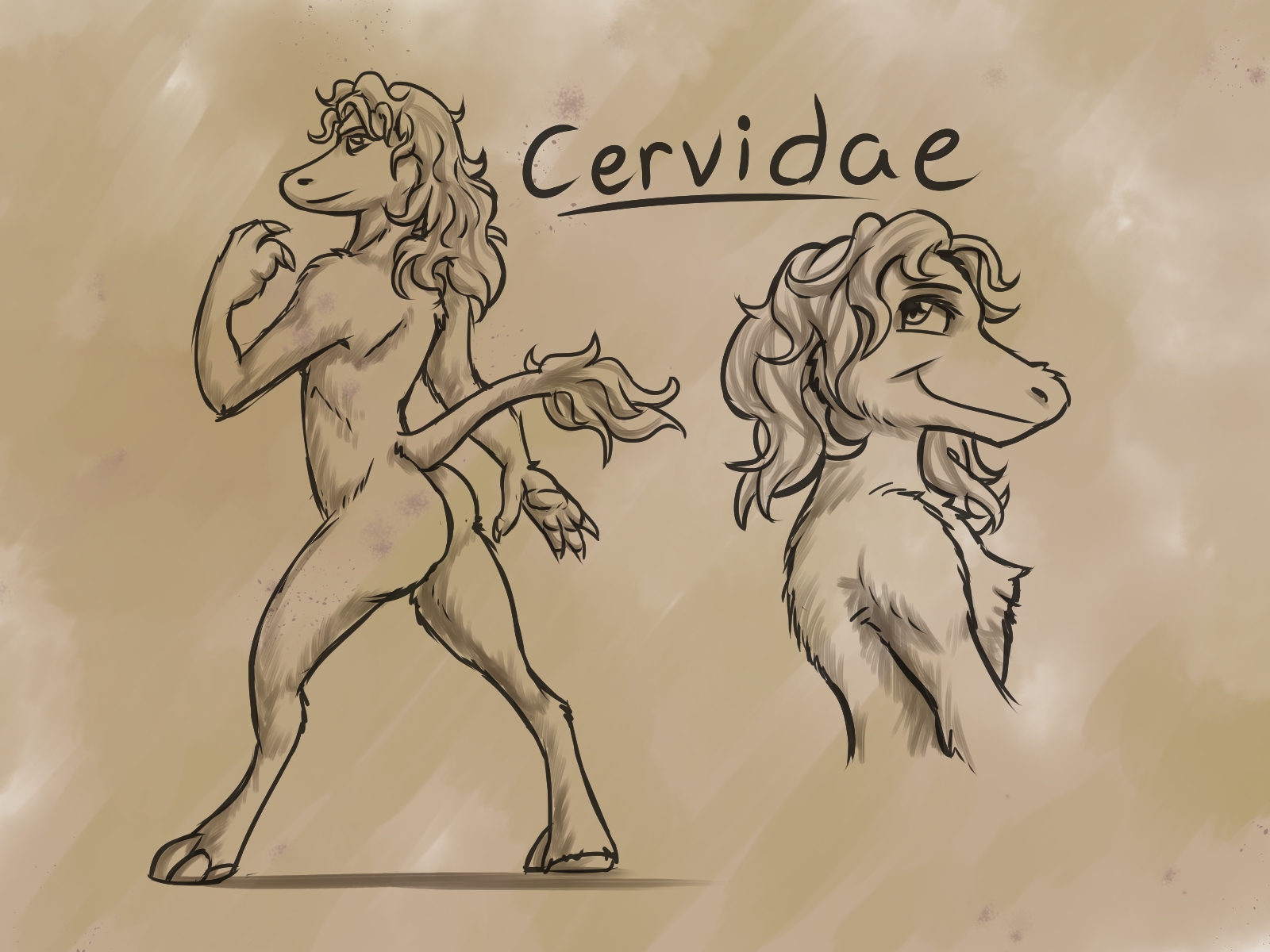
Appearance:
Cervidae have long necks, slender bodies, and legs built to propel them through the air. Their hoof-like claws are short and thick, so not to catch on debris as they gallop through woods and brush. Funnily enough at the same time, the waves and curls of their manes and tail tufts are good at collecting leaves.
Behavior:
This breed is a social one, and derives a sense of security from being in a crowd. Graceful and slender, cervidae love to jump and dance.
They're also extremely imaginative, and make great writers and storytellers. Some are accused of being a little too eccentric for their own good, and groups of this breed may get carried away on their own whimsy (the "Pink Paint Protests" in Episemon are testament to that.) Cervidae have a reputation for being radical thinkers that like to challenge the status quo, although their protests are largely peaceful. Their free-thinking open-mindedness makes them great intermediaries, although they're prone to see the best in people, even when they perhaps shouldn't.
Location:
Cervidae were originally found bounding through the trees around the foothills of Omegrad.
Interesting Facts:
- A vegetarian breed, cervidae are the only chupas with a taste for eating grass (although they have to boil and season it well to make it digestable.) It was thanks to this breed that snatchgrass became popular as a medicinal and recreational herb.
- They are naturally drawn to theatre and street performance, as well as sports that get the most from their impressive vertical leap (the record standing jump on Sirca is 110 inches - 279 cm!)
|
|

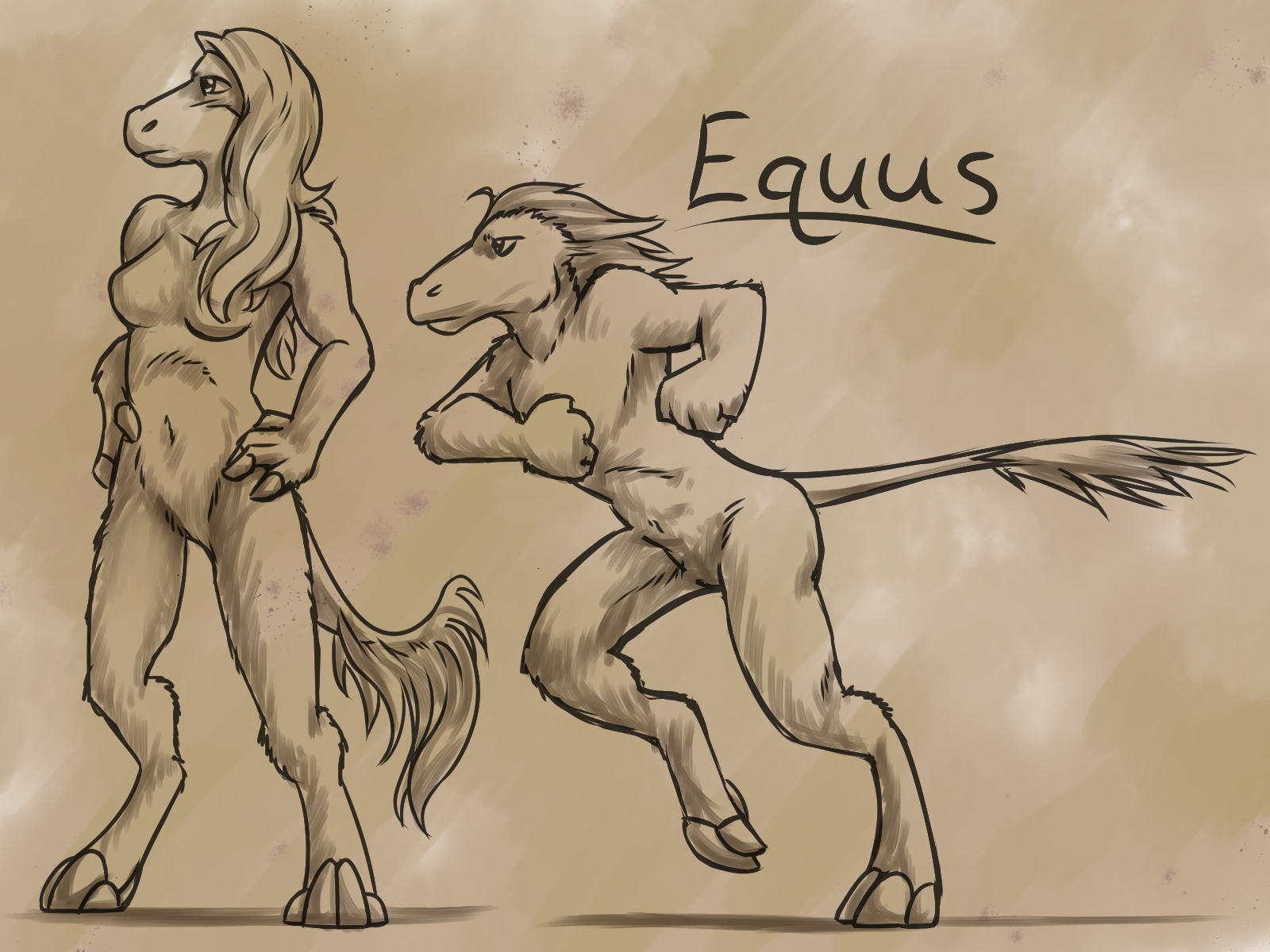
Appearance:
Equus are known for their short, dense, wiry fur and horse-like manes.
Females grow longer manes than males, making one of the few cases of sexual dimorphism among breeds. They're also unique for having non-uniform fur colors that include patterns or markings on the head, back and rump. This sinewy breed has a lot of stamina, and is adept at running long distances.
Behavior:
Equus are romantics at heart, and love epic stories of heroes and lovers. As a result they're bred to love the glory of competition, especially in sports and war. As a breed equus take great pride in their rank and performance in any field they choose to pursue. They like to show off their strength, speed and intellect so much that some chupas either loathe or exploit them for these qualities. Hard-working and loyal, they are great laborers, and they'll even show aggression towards those standing in the way of their work.
They also have a strong sense of justice and a desire to seek out the truth, so it's not surprising to find many become detectives, private investigators or journalists.
Location:
Enjoying both the outdoors and hard work, equus are easy to find in the farmsteads of Lamtha or the ranches of Wortistan.
Interesting Facts:
- A common fur pattern features a white diamond-shaped mark on the forehead, which chupapologists formerly registered as a sub-breed of equus called unicornis. This designation is now obsolete.
- Another extinct sub-breed called pegasi was known for intricate "wing-like" patterns on the shoulder blades, which are allegedly vestiges of wing-like appendages. Pegasi are attributed to an old legend about a tribe of chupas that once laid siege to Omega's empire. According to the legend, the "Pegasi Rebellion" was crushed at Omega's Citadel in a horrific battle that stripped the tribe of their proudest warriors as well as their signature "wings."
|
|

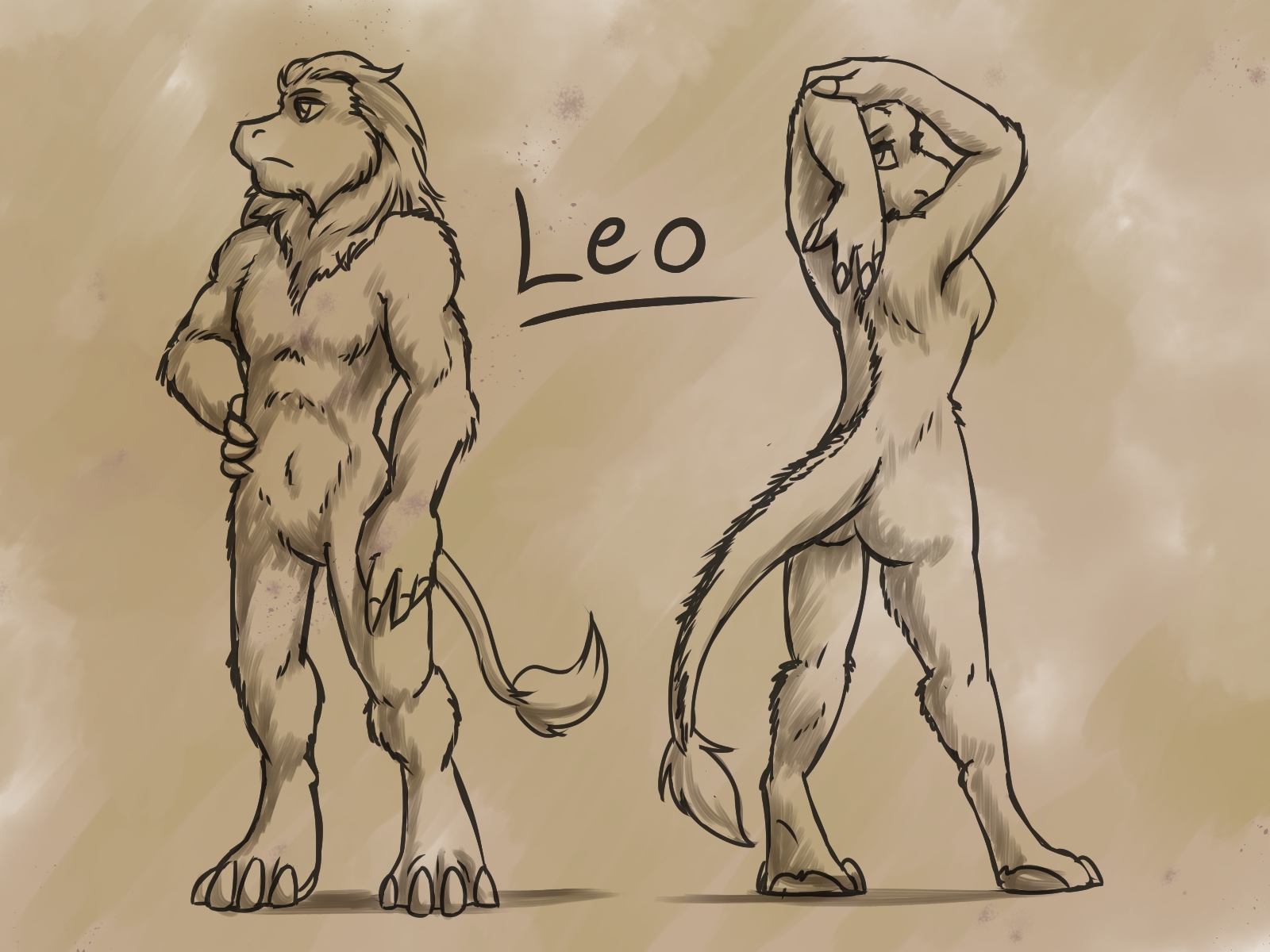
Appearance:
Leo are another example of breed-specific sexual dimorphism. Males grow a large mane around the head and shoulders, while female manes grow as a small stripe from the top of the head to the base of the tail. The male's mane displays his good health, depending on its density and hue, and female leo tend to choose mates on that basis. This breed is characterized by the massive strength in their arms and legs, capable of sprinting towards and grappling foes (and food) with ease. Their claws are sharp and sturdy for extra grip-power. While fur colors range along a chupa's typical palette, this breed is noteworthy for their striking yellow irises.
Behavior:
Leo are an atypically social breed for felis types, and like to form clubs called "prides" around like-minded chupas, especially other leo. Female leo may use prides to have polygamous relationships, which lends this breed a social stigma for licentiousness, even for prides based around something non-sexual (such as an archery club.) Chupababies are raised within these prides in order to learn a valuable trade, and then forced out of the pride upon the onset of puberty.
Males can be laid-back and quite lazy, yet easily motivated (typically via machinations from female friends) to outdo other males that they consider rivals.
Females, on the other hand, are very dedicated workers, and perform best in teams.
This breed exudes confidence and charisma, and has little trouble getting what they want--yet if diplomacy fails, they aren't above resorting to violence. To this end, many become career politicians, and Omega's highest circles of priests are filled with leo.
Location:
Leo prefer grassy, open areas for hunting large prey or maintaining livestock, to suit their carnivorous nature. Many run ranches in Wortistan and Blarganthia, at the risk of conflicts with bison family properties (one of these conflicts famously escalated into the War of Lake Highguard.) Leo also enjoy cold climates, but between the hard living conditions of Sampi and not wanting to infringe on holy grounds, no major leo communities have sprung up in these areas.
Interesting Facts:
- With their powerful, commanding voices, this breed produces the most opera singers and radio hosts.
- They enjoy grooming the wavy hair of their manes to pass time, and may also groom the manes of those with whom they've formed close bonds.
- There are rumours of a feral pride of white leo known as the "Ghosts of the Devil" who live near the Devil's Salt Flats, but no sighting has ever been verified, and most of the people claiming to have seen them were suffering from dehydration.
|
|

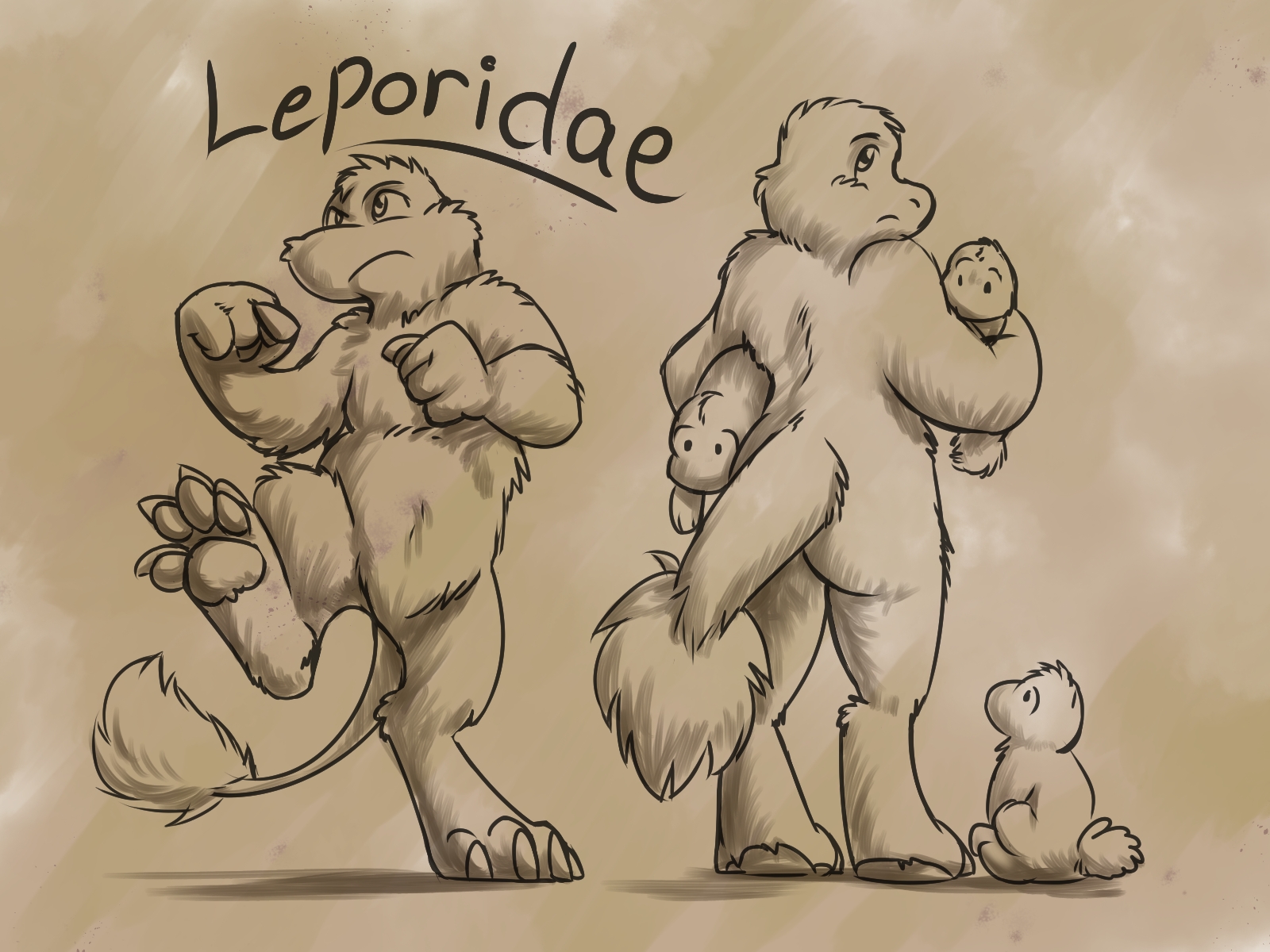
Appearance:
This breed lacks a mane, and their short tails sport a fluffy ball of hair for the tuft. Although they lack upper-body strength, with their large feet and muscular legs leporidae make great athletes, especially in events that require speed and jumping (and impressively, kick boxing.) They are a short, compact breed with a high metabolism that creates a ravaging appetite, best-suited for foraging and snacking throughout the day. Leporidae are exceptionally fertile, and couples produce three-to-six chupababies per litter.
Behavior:
Energetic and light-footed, leporidae can't be matched in sprinting contests, and their young love to challenge other chupas to races. They're also a highly curious and superstitious breed, so the ability to run away quickly has come in handy plenty of times for getting out of trouble.
This breed is known for its short attention span, and their education may require specialised classes to compensate.
Location:
Leporidae are a communal breed that first built tight-knit communities into the grassy hills of Episemon. However, due to their high libido they've well-populated nearly every territory on the ring-world. Communities of snow-white leporidae have even flourished in Sampi.
Interesting Facts:
- They have a habit of chewing on anything they can get into their mouths.
- During ruff seasons, females may show violence toward males they aren't interested in, sometimes striking hard enough to concuss.
- Impoverished leporidae with a surplus of children may sell their young to the House of Omega, to be used as test subjects or child soldiers.
- Farmers in Lamtha are mistrusting of leporidae and their reputation for stealing food.
|
|

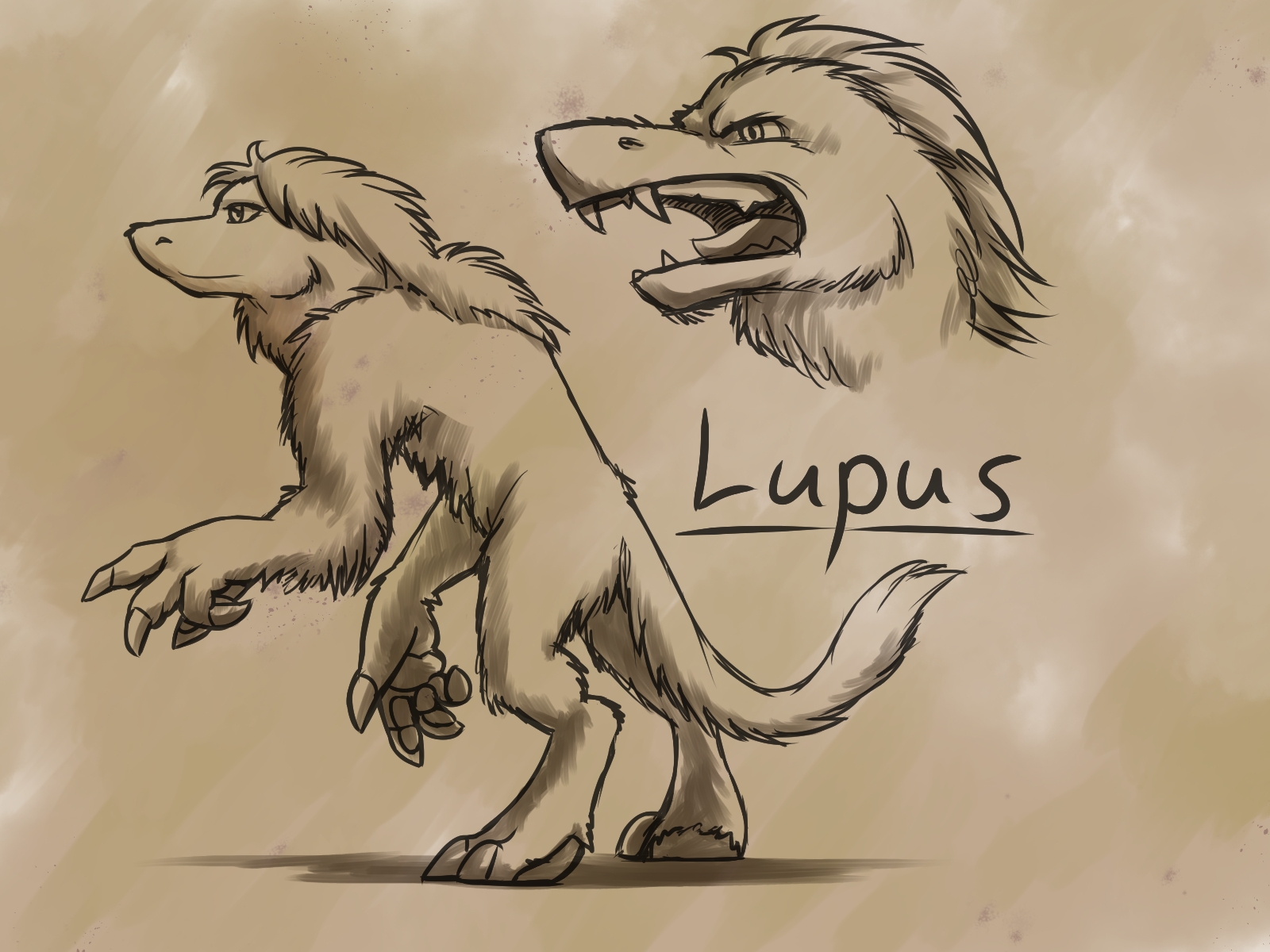
Appearance:
Lupus are a large breed characterized by great upper-body strength, long necks and snouts, pronounced canine teeth, powerful jaws, and shaggy fur that covers the neck and tail.
Behavior:
This breed is exemplary of the pack-forming social hierarchies attributed to canis types. Members of lupus packs, regardless of blood-relation, are fiercely loyal to one another and cooperate in most aspects of their lives. Solitary lupus gravitate towards other chupas and assume roles of leadership, forming their own packs or gangs. A lupus is a prime candidate for upper-management, especially in the military, where their fierce hunting instincts are valued on top of their charisma. This breed has a notoriously quick temper, and will lash out and take offense easily, starting a lot of fights.
Lupus thrive on competition, both within their packs and with outsiders, and they take as much joy out of destroying their opponent as their ancestors did ripping the throats out of their prey.
Location:
Wanderlust in lupus is common, and packs have roamed every territory on Sirca. In the tribal age, this breed preferred to stalk prey in wooded areas, including the jungles of Lactan and the evergreen forests around Sampi.
Interesting Facts:
- Lupus have a rare chance of becoming 'soul bound' with a vulpes. Both parties know that they connected in some way, and do their best to look after one another. However, due to not knowing what causes this strange behaviour and the unwavering devotion it creates in those afflicted, priests once publically executed 'soul bound' pairs in the hopes of eradicating this phenomenon. Even without a supernatural cause, lupus still find vulpes desirable mates.
- Lupus who have been bullied by one gender may form their own pack with chupas of the opposite gender (e.g. a male lupus who has been bullied by other male Chupas, will make a "pack" of almost exclusively female friends.)
|
|

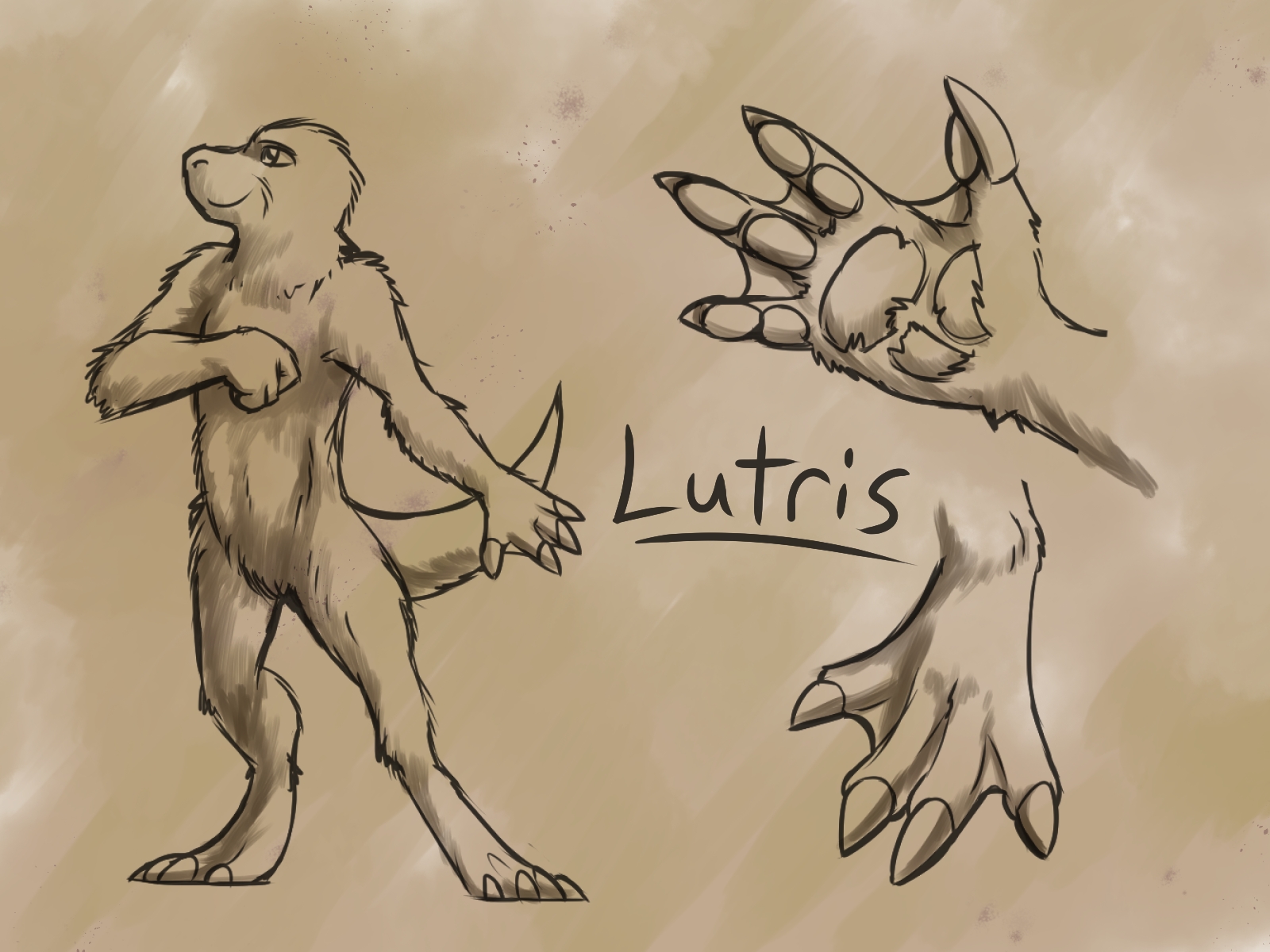
Appearance:
This breed has short limbs that make for awkward movement on land. In the water, however, the story is different. The feet and hands of lutris are wide, flat and tipped with tiny claws, with some webbed skin between digits to catch water. Their manes grow short and their fur soft and dense, allowing pockets of air to become trapped between the hairs for insulation from cold. Their tail is also thick, short and muscular, acting as a sort of rudder. On top of being strong swimmers, they have great lung capacity, and some can hold their breath up to five minutes.
This breed is recognized by their short snouts and chubby cheeks, lending them a friendly appearance.
Behavior:
Lutris are master seamen and fishermen, and there are few parts of their lives that don't take place in or around water.
This breed is energetic, passionate and fun-loving, so much that when young lutris decide to stray from the sea and strike out on their own, they're picked up by circuses and traveling performers that value these qualities.
Location:
Lutris make their homes along the salty coasts of Honkal and Sampi as well as on the islands of the Sea of Vossler.
Interesting Facts:
- Their digestive systems are extremely tolerant of aquatic fauna and flora, to the point where they can eat uncooked fish, seaweed and squid with ease. This "iron stomach" could be related to their ability to drink heavy quantities of alcohol with no ill effects.
- Lutris can be very forgetful, and lose small items easily (sometimes inside their own fur!)
- Speaking of, their fur is extremely high-maintenance, and requires hours of meticulous grooming to stay "waterproof." Some hair care products cater exclusively to lutris.
|
|

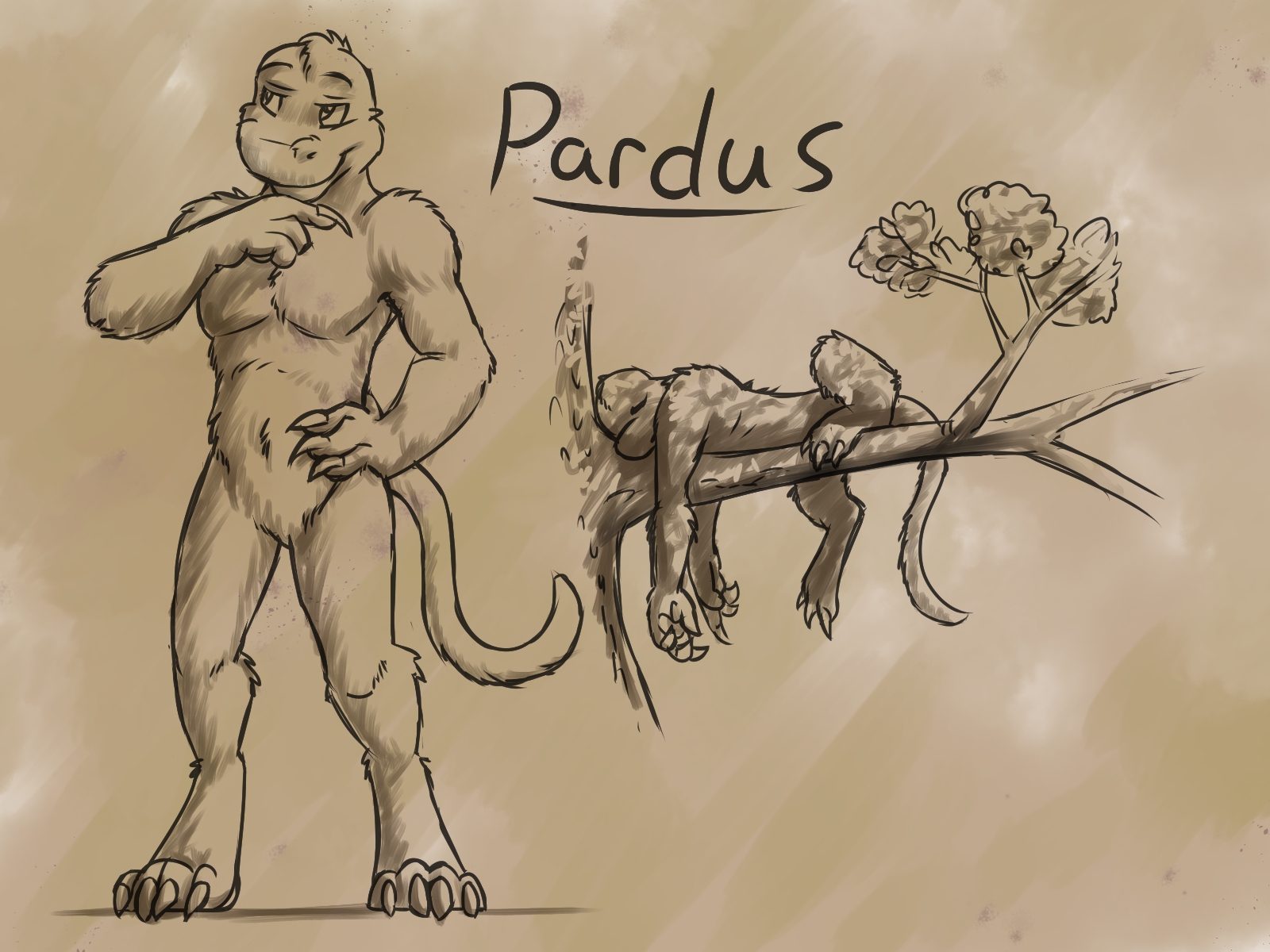
Appearance:
Pardus is a breed whose soft and silky fur is the envy of other chupas. Strands of their hair have a slight gradient that give them an appealing "smokey" color. Among other felis breeds they have an average body height and lean, muscular build. Their manes and tail-tufts do not grow long, or in some cases at all. This breed has large feet and hands with needle-like claws, suited for grappling and climbing.
Behavior:
Pardus are not a social breed, and only seek out other chupas for mating or business purposes. Sometimes even child-rearing is delegated elsewhere, and parents see fit to send their offspring to the military or a trade school at the earliest age possible. Vain to a fault, pardus will devote whole afternoons to preening, and are prone to flaunting their talents whenever they venture into public spaces. Despite this (or perhaps because of it), pardus most strongly value strength, grace, cunning and beauty, and will make devoted followers of any who surpass them in these qualities.
Location:
Pardus like the company of trees, and aren't afraid to venture into high branches to sniff out a good perch. Historically, the sturdy boughs of rattatat trees that overlook the plains of northern Qoppa are this breed's favorite. In cities, this translates to a love of lofty flats and balconies.
Interesting Facts:
- The young are known for their brilliant patterns of pre-pubescent spots. These marks are darker, heavier and cover more of the body than the faint spots that appear on the backs of other chupa breeds in juveniles.
- They have a flair for visual art, and love to paint. The murals outside Omegrad Cathedral were done by a famous pardus.
- This breed produces Sirca's most prominent fashion designers and magazine models.
|
|

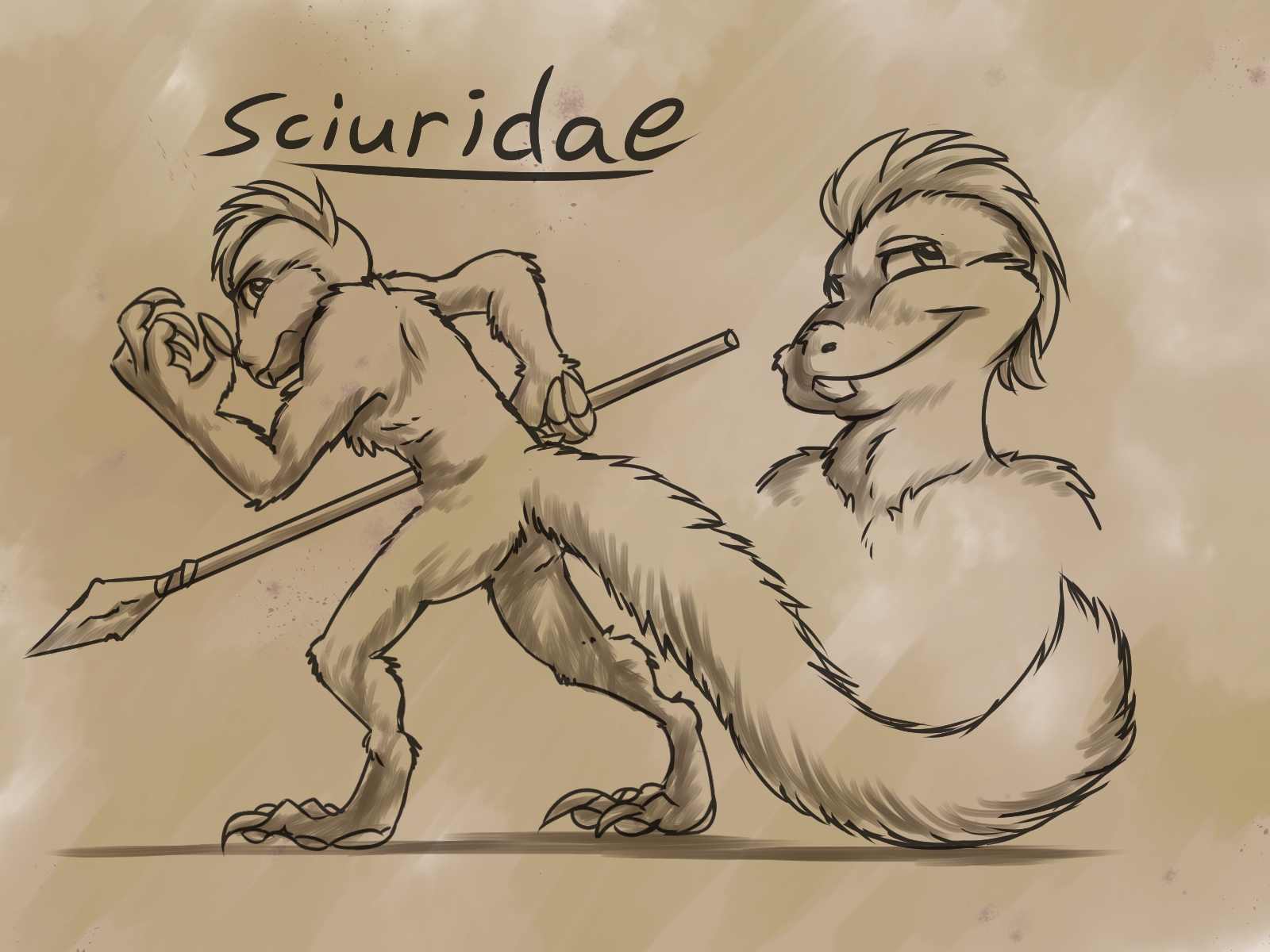
Appearance:
The smallest breed of chupa, sciuridae are identified by their bushy tails with ticked fur patterns, buck teeth, sloping brows, and long torsos with short limbs. They're quick and agile, with long digits and hooked claws suited for scaling tree bark.
Behavior: Of all chupa breeds, sciuridae maintain most of their old-fashioned tribal customs and teachings. They resist modern encroachings, and even show open hostility to Red and Blue armies that build bases nearby. It is a rare privledge for an outsider to be welcomed into a sciuridae home, so few reports of their way of life make it out of the jungle. Resident armies in Lactan call them "feral," and their territory "the Squirrelies."
From a young age sciuridae are trained by their elders to focus their hyper-active nature into useful tasks and physical feats. Consequently, this breed produces hunters and warriors with much quicker reflexes than most chupas. It has even been said that sciuridae can slow down time (technically, their perception of time is so fast that others around them appear to react more slowly.)
This breed produces genius hunters and trackers, and police have often enlisted sciuridae to track down fugitives and missing persons.
Location:
This breed's xenophobic nature keeps them isolated from other chupas, and they rarely migrate from their treetop homes in the thickest woods of Lactan and Timae. Certain families immigrated to Omegrad and have thrived by scaling the brick-and-mortar buildings (to the chagrin of local law enforcement.) The "tame" sciuridae that live in the city are noted for their broken common-speak and penchant for hoarding shiny objects.
Interesting Facts:
- For anyone entering their neck of the woods, sciuridae scouts in their treetop perches will slap their large tails against the tree's trunk to warn their kin of intruders. The rapping sound of their tails can carry nearly half a mile. If the trespasser is lucky, they'll be able to escape before getting pelted with shot from slings and crude air guns.
- Since sciuridae tribes will change their dialects for various reasons depending on local events, Omegite missionaries have had little success cracking their language. It isn't known whether the tribal gods they worship are a different form of Omega, or some sciuridae-exclusive pantheon.
|
|

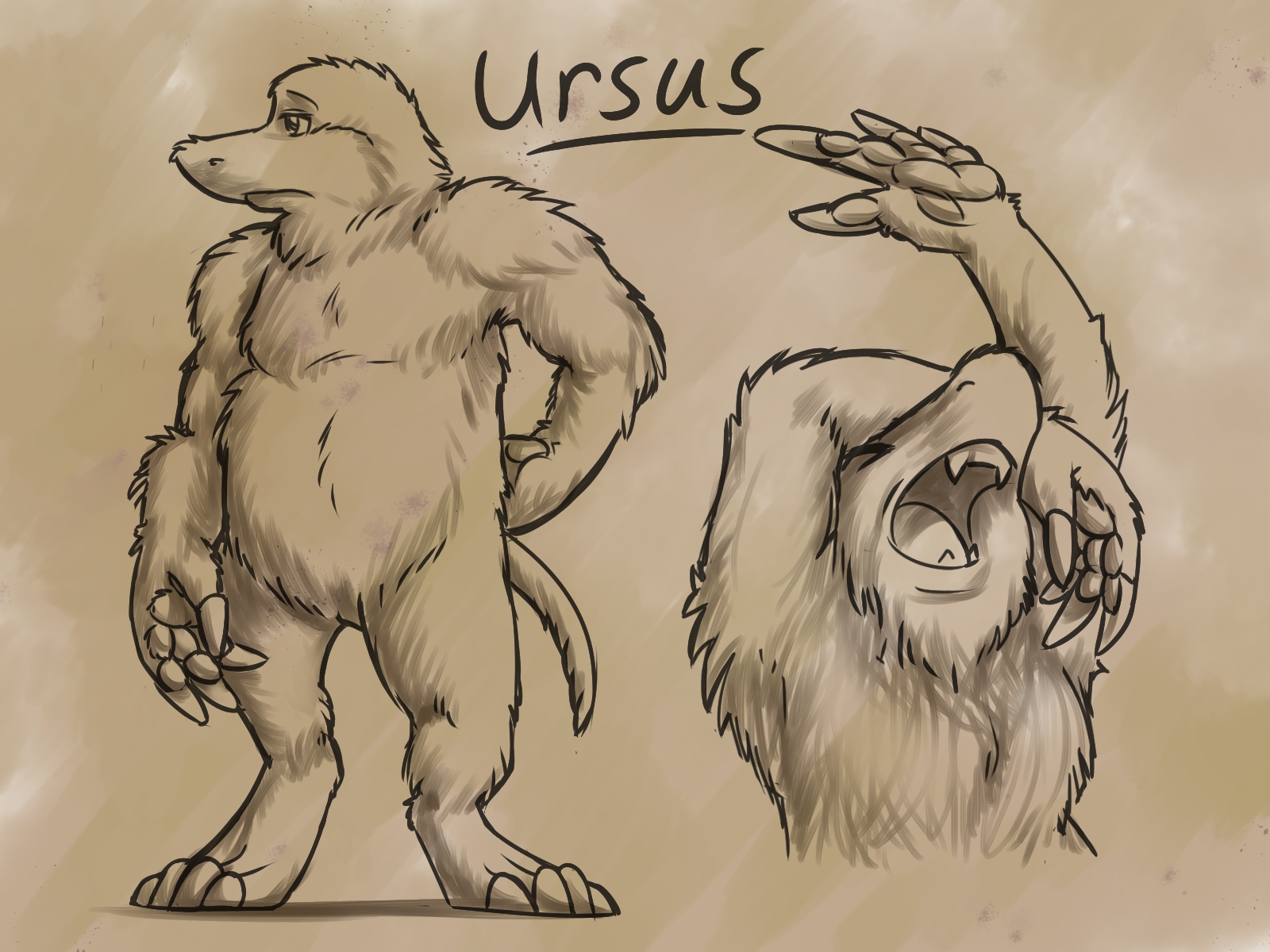
Appearance:
Ursus are a large, intimidating breed. Their height is second only to bison, and their bodies are packed with fat and muscle to make them as broad as they are towering. While their claws aren't as sharp as the ones on felis breeds, they're still long enough to cause a lot of damage with a single swipe. Despite their girth and stocky legs, this breed also makes fast runners (yet to win a fight, all an ursus usually has to do is stand their ground.) While not quick to anger, once they've been provoked into a rage, the carnage is complete and lethal.
This breed is identified by their long snouts, stumpy, tuft-less tails, lacking mane, and the thick fur covering their entire body.
Behavior:
Considered grumpy loners by other breeds, ursus prefer peace and solitude over large, busy communities. Ursus avoid conflict as much as possible and spend their days foraging for food and taking naps, saving their strength for tasks they deem worthwhile. They believe wholeheartedly in a "work smarter, not harder" philosophy, and are keen on finding shortcuts and solving puzzles rather than more direct or aggressive solutions. Sensitive to their environment, they prefer to be active during sunny days, and during extreme weather they may grow tired and hole themselves up in their homes.
Location:
Due to their shaggy hair and high percentage of body fat, ursus thrive under the permanent state of winter in Sampi. They also favor the cool streams and waterways off the coast of Honkal, having a taste for fresh-water fish.
Interesting Facts:
- Being the shut-in type, ursus collect a lot of books for reading to pass the time. Some of their libraries grow to an impressive size.
- Colonies of snow-white "polar" ursus once lived in Kaprime, yet since that territory was locked down to build Omega's Holy Citadel, those families migrated into Sampi.
- Masters of patience, an ursus will sit and watch a trap they've built for two straight days.
|
|

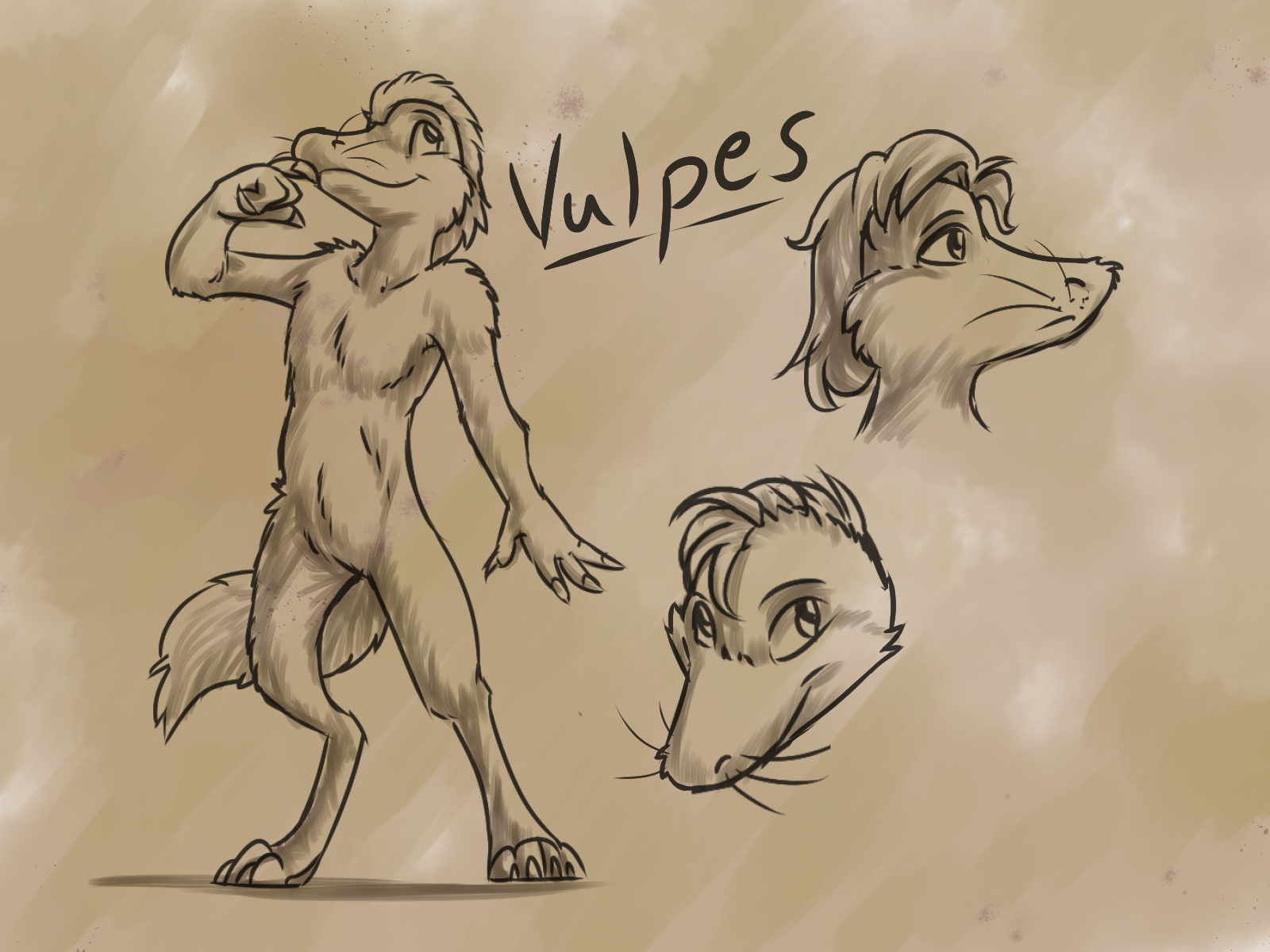
Appearance:
With their slender bodies, dainty hands and feet, short limbs, pointy muzzle, and bushy tails, vulpes have a petite look that can be disarming. They're uniquely equipped with sensory whiskers on their snouts that can feel out small spaces, fasciliating the breed's knack for hiding.
Behavior:
Vulpes are a quick-footed, boisterous breed. They are skilled with their hands, and craftsmen love to employ them to work with tiny, intricate parts. Curiosity and cunning are associated with this breed, as well as a penchant for mystique, and with that a stereotype for mischief and lawlessness. For good or for ill, this gives them an edge with traders and con-artists. Since bison control most of the trade between Stigma and Omegrad, it's not unusual to find a few vulpes in their ranks as honorary members of the family, offering counsel in trade disputes.
On the flip side of their shrewd nature, vulpes are also notoriously capricious, easily-distracted and forgetful.
Location:
Vulpes can be found almost anywhere, since their small and adaptable body type is well-suited to every climate Sirca has to offer. Most set up shop close to trade routes, especially between Episemon and Omegrad.
Interesting Facts:
- In ancient tribes, it was believed that vulpes had access to magical powers. While the modern vulpes line is heavily diluted between canis and felis breeds, a rare "pure-blood" vulpes might have access to these strange abilities even today.
- Vulpes love music and have robust singing voices. Coupled with their gift for gab, this makes them excellent bards.
|
|
![]()













